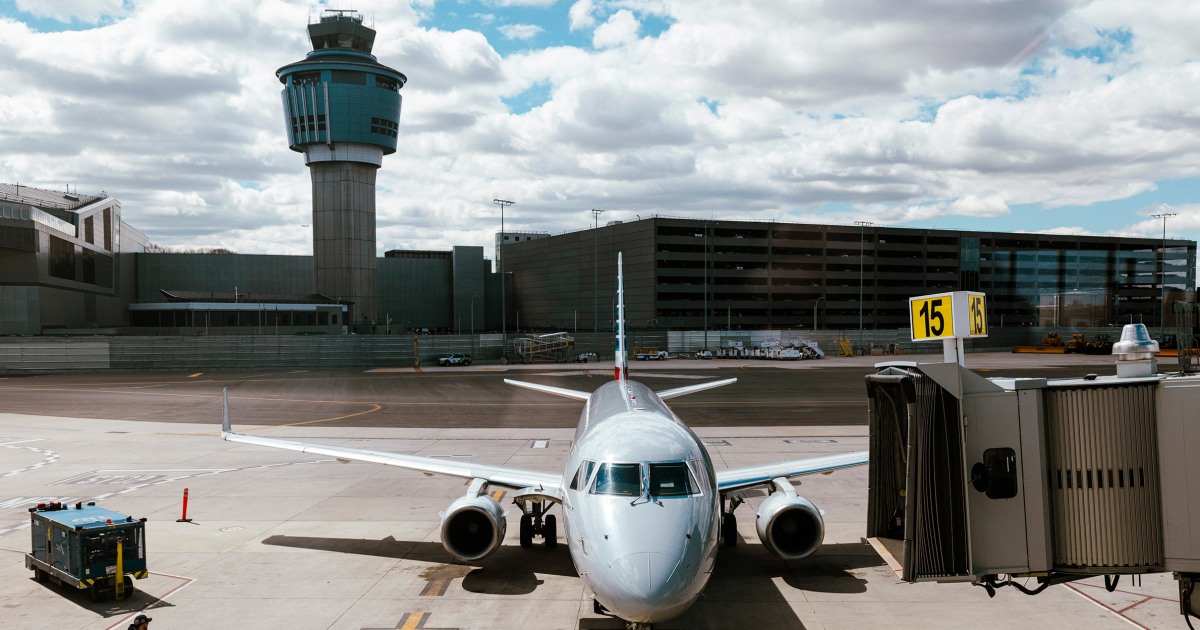Near Miss at LaGuardia: Passenger Jet Aborts Takeoff to Avert Disaster
A commercial airliner narrowly avoided catastrophe at New York’s LaGuardia Airport on Tuesday when pilots aborted takeoff after spotting another aircraft crossing their runway. The incident, involving a Southwest Airlines Boeing 737 and a Delta Air Lines regional jet, occurred during peak morning traffic, reigniting concerns about runway safety at one of America’s busiest airports.
Close Call Details Emerge
According to preliminary FAA reports, the Southwest flight (WN 2493 to Chicago) had accelerated to approximately 80 knots when the crew spotted the Delta Connection Embraer 175 taxiing across Runway 04. The pilots immediately initiated maximum braking, bringing the 737 to a stop with an estimated 1,000 feet of runway remaining. Aviation experts calculate the aircraft came within 15-20 seconds of potential collision.
“This wasn’t just a routine go-around – it was a textbook example of crew resource management preventing tragedy,” said Captain Jason Reynolds, a retired 30-year airline pilot and safety consultant. “At that speed with full fuel loads, we could be looking at another Tenerife if they’d hesitated.”
Air Traffic Control Under Scrutiny
The National Transportation Safety Board (NTSB) has launched an investigation into potential controller errors. Preliminary radio transcripts reveal the Delta aircraft received clearance to “cross Runway 04” while Southwest simultaneously had takeoff clearance. Key questions include:
- Whether proper separation protocols were followed
- Potential miscommunication between tower and ground control
- Runway lighting system functionality during the incident
LaGuardia’s compact layout exacerbates operational challenges. With intersecting runways and just 700 acres of land (compared to JFK’s 5,200), the airport handles over 400 daily flights with minimal margin for error.
Alarming Trends in Runway Safety
This incident marks the 7th serious runway incursion in U.S. airspace this year, continuing a troubling trend:
- 2023 saw 23 Category A/B incursions (most severe classifications)
- 23% increase in serious incursions since 2021 (FAA data)
- LaGuardia accounts for 11% of all U.S. runway incidents since 2020
“We’re seeing the perfect storm of aging infrastructure, staffing shortages, and increased traffic,” noted aviation safety researcher Dr. Amelia Chen. “The system is operating at 1990s staffing levels with 2024 traffic volumes.”
Industry and Regulatory Response
The FAA has temporarily reassigned the involved controllers pending investigation. Meanwhile, airlines are reiterating safety protocols:
- Southwest mandated additional runway awareness training
- Delta reviewing taxi procedures for regional partners
- Port Authority accelerating LaGuardia runway lighting upgrades
Transportation Secretary Pete Buttigieg stated: “While our aviation system remains the world’s safest, each incident provides crucial lessons. We’re deploying new runway surveillance technology at 20 high-risk airports this year.”
Passenger Experience and Psychological Impact
Passengers aboard the aborted flight described a harrowing experience. “The engines roared, then suddenly we were thrown forward,” recounted traveler Michael Rosen. “The flight attendants’ shouts of ‘Brace!’ chilled me to the bone.”
Aviation psychologists note such events can create lasting anxiety. “The cognitive dissonance of near-disaster at a routine moment lingers,” explained Dr. Evelyn Park. “We may see increased demand for passenger counseling services.”
Technological Solutions on the Horizon
The aviation industry is pinning hopes on emerging technologies to prevent future incidents:
- ASDE-X: Advanced surface detection systems (currently at 35 major airports)
- ROPS: Runway Overrun Prevention Systems becoming standard on new aircraft
- AI Taxi Assist: Machine learning tools to predict routing conflicts
However, implementation faces hurdles. “Technology helps, but human factors remain critical,” cautioned NTSB chair Jennifer Homendy. “We need better staffing, training, and fatigue management alongside new tools.”
What Travelers Should Know
While statistically rare, runway incidents prompt practical questions for passengers:
- Aborted takeoffs occur about 1 in every 2,000 flights (industry data)
- Modern aircraft brakes can stop a loaded 737 within 3,000 feet
- FAA requires all crews to train for rejected takeoff scenarios
“This event proves the system works when procedures are followed,” emphasized Captain Reynolds. “Passengers should feel reassured by the multiple layers of safety.”
Looking Ahead: Policy and Infrastructure Changes
The incident adds urgency to several pending aviation initiatives:
- FAA reauthorization bill’s $1.8 billion for runway safety tech
- LaGuardia’s $6 billion modernization program timeline
- Proposed increases in air traffic controller hiring
As investigations continue, one reality becomes clear: America’s aviation infrastructure requires significant investment to maintain its safety record amid growing demands. Travelers can stay informed about airport safety improvements through FAA advisory committees and local airport authority meetings.
See more Update My News



